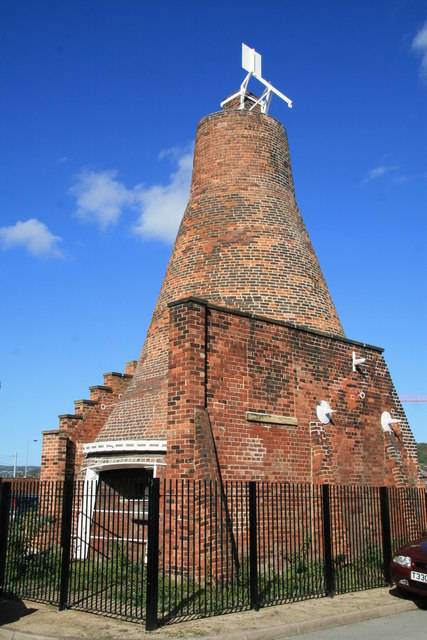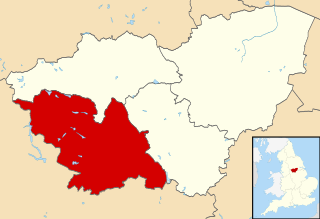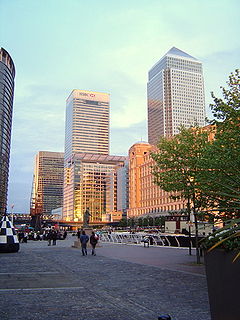
Cutlers' Hall is a Grade II* listed building in Sheffield, England, that is the headquarters of the Company of Cutlers in Hallamshire. It is located on Church Street opposite Sheffield Cathedral.

St Vincent's Quarter is one of Sheffield's eleven designated quarters, centring on and named after St Vincent's Church. Primarily an office and industrial location, its regeneration has increased rapidly over the past few years, with the new Metier residential block and Velocity Village office and residential accommodation springing up on the north side of Tenter Street. Despite recent development, the area still contains several dilapidated or derelict workshops and prostitution is common in the area.

Church Street is situated in the centre of Sheffield at the grid reference of SK353874. It runs for approximately 490 yards (450 m) in a westerly direction from its junction with Fargate and High Street to its termination at the crossroads formed by the junction with West Street, Leopold Street and Townhead Street. Church Street has its own Sheffield Supertram stop directly in front of the Sheffield Cathedral and it carries that name.

Redvers House is an office block situated on Union Street in the centre of the city of Sheffield in South Yorkshire, England.

The Globe Works are a former cutlery factory situated in the City of Sheffield, South Yorkshire, England on Penistone Road in the suburb of Neepsend. The Works are a Grade II* Listed Building which in the late 1980s were renovated to provide modern office space. It is part of the Kelham Island Conservation Area.

Cornish Place is a listed building situated in the Neepsend area of the City of Sheffield. The building was formerly the factory of James Dixon & Sons, a Britannia metal, Sheffield plate and Cutlery manufacturer. In the late 1990s the disused building was cleaned and converted into apartments, it is regarded as the most impressive cutlery works that still stands in Sheffield and rivals the cotton mills of Lancashire and the West Riding in terms of architectural quality and heritage. The most impressive parts of the building are the east and west ranges which have Grade II* listed status while the rest of the works have the lower Grade II rating. The "Cornish" in the buildings name is thought to derive from the manufacture of Britannia metal which is made up of 93% tin which came from Cornwall.

The Mount is a Grade II* listed building situated on Glossop Road in the Broomhill area of Sheffield in England. It stands just over 1.3 miles (2.1 km) west of the city centre. It is a neoclassical building which was originally a terrace of eight houses but since the 1950s has been used for commercial office space for various businesses. The building is part of the Broomhill Conservation Area, which was set up in March 1977 through an agreement with local residents and Sheffield City Council.

Taylor's Eye Witness Works is an industrial building situated on Milton Street in the Devonshire Quarter area of Sheffield city centre, South Yorkshire, England. The works are a Grade II listed building which since their foundation in 1852 have always specialised in producing kitchen and pocket knives along with various associated products. The building is believed to be the only traditional works in Sheffield which still manufactures its original products. It stands next to the Beehive Works another listed cutlery works on Milton Street.

Leah’s Yard is a former collection of small industrial workshops situated on Cambridge Street in the city centre of Sheffield in South Yorkshire, England. Although now in a run down state, the building has been designated as a Grade II* listed building because of its importance as an example of Sheffield’s industrial heritage.

The Beehive Works are a purpose built cutlery works located on Milton Street in the Devonshire Quarter area of Sheffield city centre. The works were built in stages in the second half of the 19th century and are designated as a Grade II* listed building with English Heritage stating that they are of special architectural and historic interest as an examples of buildings associated with Sheffield's metal manufacturing and metal working trades. The works stand adjacent to the Taylor's Eye Witness Works and together they make Milton Street one of the best places to gain an impression of Sheffield’s former cutlery industry.
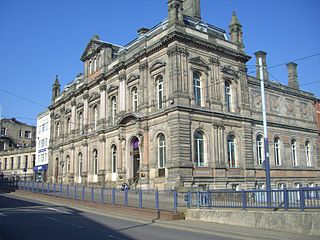
The former Sheffield United Gas Light Company Offices is a Grade II listed building situated on the northern side of Commercial Street in the centre of the City of Sheffield, South Yorkshire, England. It was originally known as Panache House and this is carved above the western doorway of the building, today it is better known as Canada House. While the main outlook of the building is out onto Commercial Street there is also a short frontage onto Shude Hill at its eastern end and this designated as 19 Shude Hill.

The Brooklyn Works is a former site of steel, saw and file manufacture, it is situated on Green Lane in the Kelham Island Quarter of the City of Sheffield, England. In recent years the works have been converted into residential apartments and offices. The structure is a Grade II listed building because of its importance as an example of Sheffield’s industrial heritage. The works stand adjacent to the listed industrial buildings of the Green Lane Works and Cornish Place in what has been called, “the most coherent stretch of industrial landscape in inner Sheffield”

35 Well Meadow Street is the site of a house, attached workshops, courtyard complex and a crucible furnace. It is located in the St Vincent's Quarter of the City of Sheffield in England, it is also part of the Well Meadow Conservation Area. The buildings and furnace are grade II* listed buildings because of their importance as part of Sheffield’s industrial heritage and it is regarded as, “One of the most significant of the city’s 19th century industrial monuments”. It has now been converted into residences.
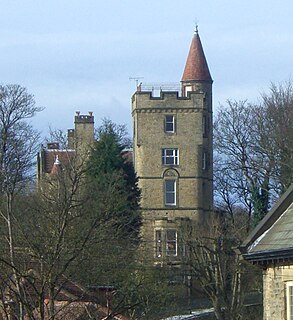
The Towers is a small English country house situated in Sheffield, England. The house stands on Sandygate Road close to the junction with Coldwell Lane in the suburb of Crosspool. It is a Grade II listed building as is the lodge and attached gateway and the concave garden wall. It has been described as “an extraordinary Scottish baronial fantasy”.
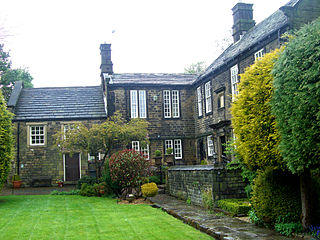
Birley Old Hall is a small English country house situated in the Birley Edge area of the City of Sheffield, England. The hall stands in an exposed situation at almost 200 metres above sea level on Edge Lane, some six km NW of the city centre and has been designated a Grade II listed building by English Heritage as has the Falconry which stands in the garden.

The Darnall Works is a former steelworks in the Darnall area of Sheffield in England. The only remaining large complex of crucible furnaces, the works opened in the 1835 and were frequently extended and adapted until the late 20th century. Some of the structures at the works are listed buildings, at Grade II* and Grade II, and part of the site is a Scheduled Ancient Monument.
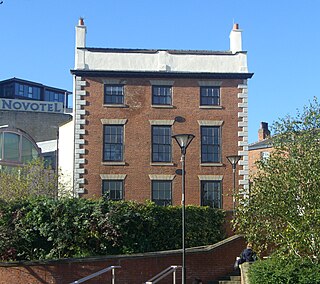
Leader House is a Georgian townhouse located on Surrey Street in the city centre of Sheffield, England. It overlooks the busy Arundel Gate dual carriageway and is a Grade II listed building.

Ughill is a small rural hamlet within the City of Sheffield in Bradfield Parish in England. It is 5 mi west-northwest of the city centre. It stands in a lofty position at 918 ft above sea level, on a ridge between Bradfield Dale and the valley of the Ughill Brook. It has traditionally been a farming community, but there was some mining in the area in the late 19th and 20th century. Ughill Hall was the scene of an infamous murder in September 1986. The hamlet falls within the Stannington ward of the City.
